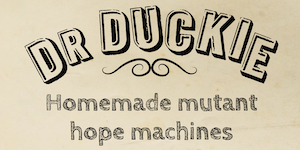I do love a bit of music hall. It’s a form that’s often seen as a bit cheesy – those nudge-nudge euphemisms and all those Victorian collars and frills – but there’s so much to cherish in its rampantly eclectic line-ups of disparate talents, beautiful spaces and assured audience rapport. (That side of things is where panto’s chattiness comes from.) So I was keen to check out the exhibition of music-hall-related material that the London Metropolitan Archives have just unveiled at the Barbican’s library.
It’s not huge: four vitrines of letters, photos, programmes and other documents (all reproductions, sadly), with accompanying text. But it’s a great overview of the form, which flourished throughout the UK from the mid-19th to mid-20th centuries, and contained lots of lovely nuggets that were new to me. Here, then, are 10 things I learned…
1. It’s about the booze. It’s always been about the booze
It was the Theatre Regulation Act of 1843 that basically created music halls by decreeing that venues could mount dramatic productions or sell alcohol but not both. So producers who wanted to deliver classic plays went into theatah and those who wanted to deliver a good time got the music-hall ball rolling.
2. It wasn’t all songs and gags
As well as musicians and comics, a music-hall bill might feature ballet, burlesque, acrobats, animal acts (famed comic Dan Leno was also the winner of the 1880 world dog-dancing championship), tableaux vivants, equilibrists, mandolinists and, er, ‘Bedouin Arabs’ or blackface acts.
3. There were a lot of good names involved
So Jules Leotard, Samuel Vagg, Turner the Tenor, the Mayor of Mudcumdyke and Clarence, Last of the Dandies, walk into a music hall…
4. Little Tich reached his full height of 4’6″ at the age of 10.
5. There are always prudes
One music hall was closed because of the can-can, while the Salvation Army bought another just to stop people having the wrong kind of fun. (Adding insult to injury, it was later replaced by a police station.) In 1894, the Empire Leicester Square – a music hall before it was a cinema – faced a concerted campaign of opposition, dubbed ‘Prudes on the Prowl’, led by Mrs Ormiston Chant. The result was that the venue was forced to close for a while and erect a partition between the bar and the auditorium…
6. But the drunks are always louder
…which was torn down by a crowd of punters the first night it re-opened. Bottoms up, Mrs Ormiston Chant!
7. The theatre electrician was a key witness when magician Chung Ling Soo (aka William Robinson) was killed on stage in 1918 by a bullet catch gone wrong
“The men with the Guns knelt down & they fired. The explosion was terrific & Mr Soo reeled & called out ‘Oh!!” & fell down in a heap & there was a terrible confusion. Blood was pouring out of him…”
8. During the Second World War, animal acts were banned in case a bomb hit the venue and the wildlife was set loose
But the rule wasn’t uniformly applied: the Coliseum wrote to the council to complain that while they had been denied permission for shows involving baby bears and crocodiles, the Orpheum up the road was showing off their lions and elephants.
9. If a 1980 plan to renovate Wilton’s Music Hall had gone ahead, there would have been a Liza Minnelli bar
Which obviously would have been fabulous.
10. There used to be a music hall five minutes from my flat
The Canterbury Hall on Upper Marsh, just west of Westminster Bridge, was where music hall’s finest male impersonator, Vesta Tilley, made her debut. Pictured at the top of this post, it was bombed out in the war. Nothing against the hood now but I bet those were the days…
Music Hall in London is at the Barbican Music Library until February 27. All images via London Metropolitan Archives.


